#Mantua italy
Explore tagged Tumblr posts
Photo
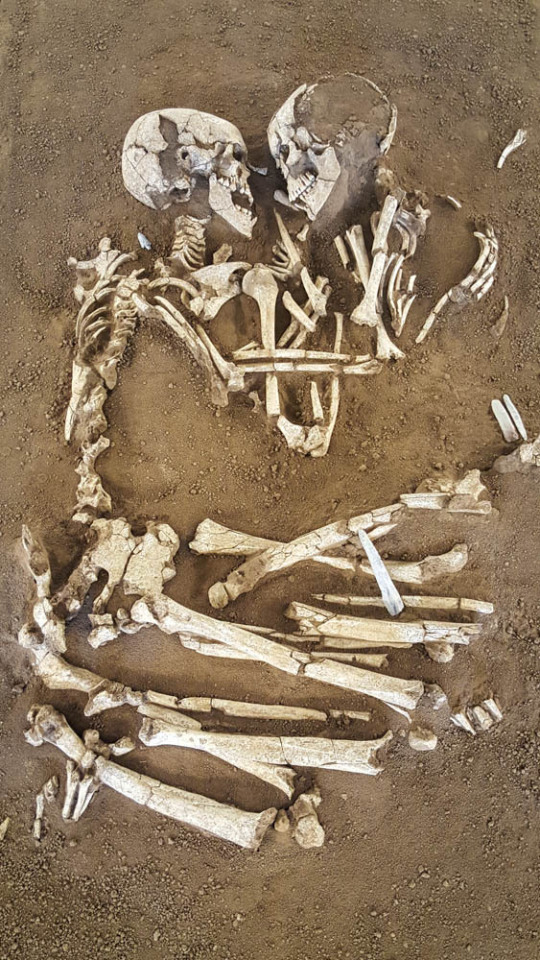
The Lovers of Valdaro, discovered by archaeologists at a tomb in San Giorgio near Mantua, Italy. The couple have been holding one another for 6,000 years.
* * * *
“Once upon a time there was a boy who loved a girl, and her laughter was a question he wanted to spend his whole life answering.”
― Nicole Krauss, The History of Love
#quotes#Nicole Krauss#The History of Love#The Lovers of Valdaro#San Giorgio#Mantua italy#lovers#history#archaeology
137 notes
·
View notes
Text
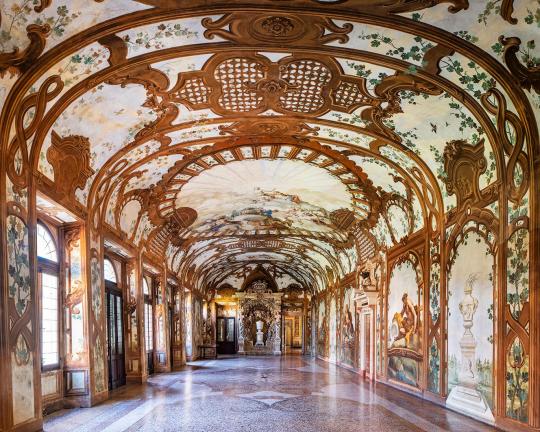
Palazzo Ducale di Mantova, Mantua, Lombardy, Italy,
Reinhard Görner Photography
#art#design#architecture#history#luxury lifestyle#style#luxury house#interior design#luury home#interiors#palace#palazzo#palazzo ducale#mantova#italy#lombardy#mantua#old castle#reinhard gorner
455 notes
·
View notes
Text

San Giorgio Castle part of Palazzo Ducale di Mantova, built between the 14th and the 17th century mainly by the noble family of Gonzaga as their royal residence.
Mantua (Montova)
Jan 2017
#mantua#mantova#castles#palazzo#palazzo ducale#italia#italy#original photography#photography#travel#photographers on tumblr#lensblr#historical architecture#architecture#palace#urban exploration#urban photography#wanderingjana
21 notes
·
View notes
Text
born to elope in mantua with him
forced to practice my needlepoint
#girl problems#girlhood#juliet capulet#capulet forever#team capulet#targeted#i love you romeo#romeo my love#romeo we should elope in mantua like wouldn't that be so cool#romeo and juliet#shakespeare#william shakespeare#romeo & juliet#verona italy
13 notes
·
View notes
Photo
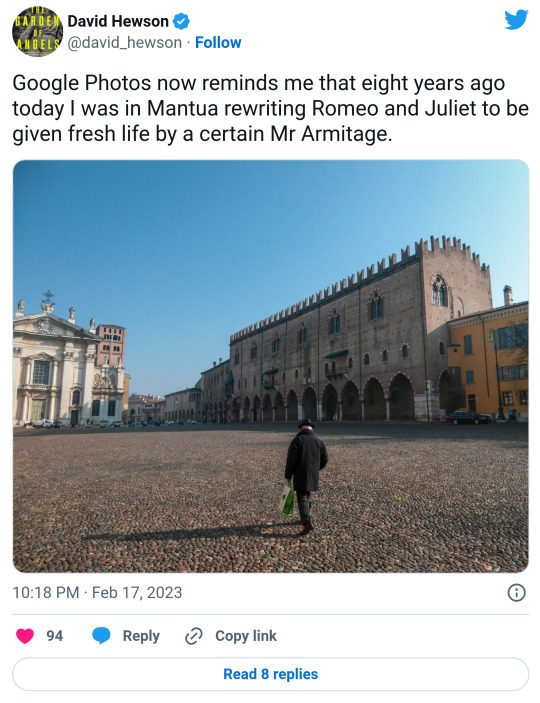
16 notes
·
View notes
Photo
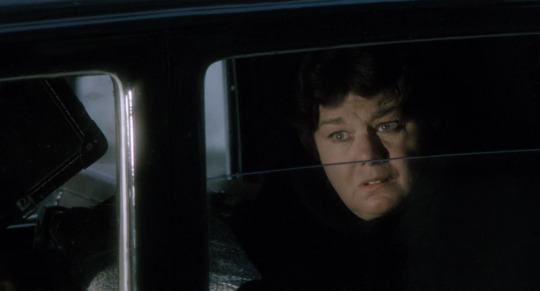
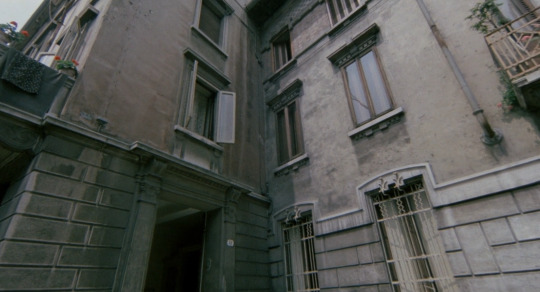
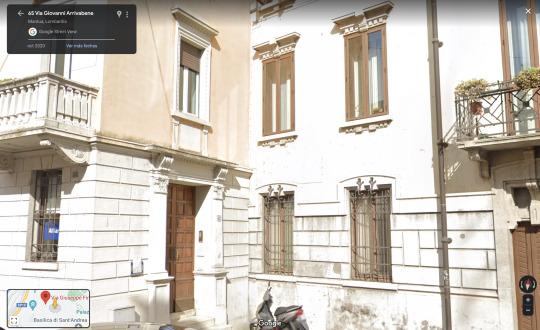
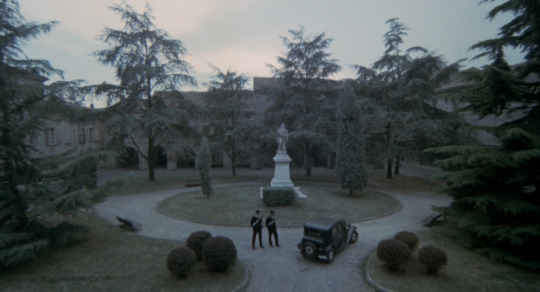
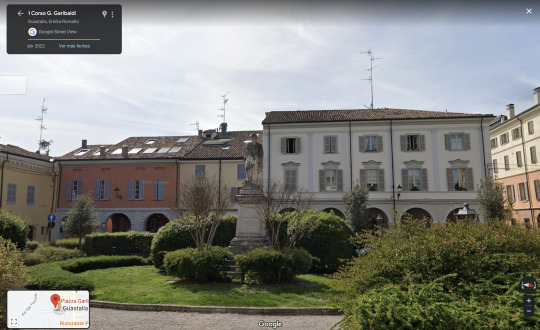
Gran bollito / Black Journal Mauro Bolognini. 1977
House Via Giovanni Arrivabene, 54, 46100 Mantova MN, Italy Square Piazza Garibaldi, 42016 Guastalla, Reggio Emilia, Italy See in map
See in imdb
#mauro bolognini#gran bollito#shelley winters#max von sydow#mantua#italy#lombardy#emilia-romagna#guastalla#movie#cinema#film#location#google maps#street view#1977
12 notes
·
View notes
Photo
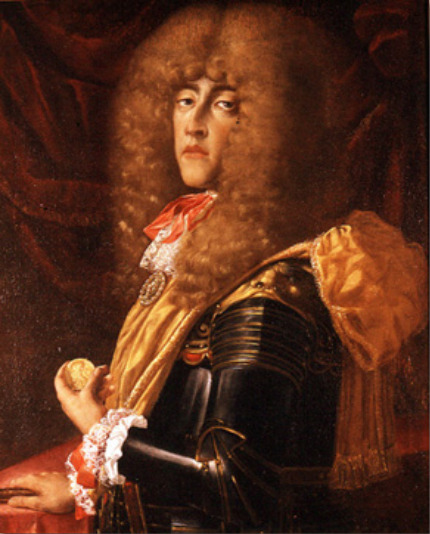
Attributed to Frans Geffels - Portrait of Charles IV, Duke of Mantua (1652-1708) -
oil on canvas, height: 98 cm (38.5 in); width: 82 cm (32.2 in)
Palazzo d'Arco, Mantua, Italy
Ferdinando Carlo Gonzaga (31 August 1652 – 5 July 1708) was the only child of Duke Charles II of Mantua and Montferrat, and the last ruler of the Duchy of Mantua of the House of Gonzaga.
Frans Geffels, known in Italy as Francesco Geffels (25 August 1624 – 18 February 1694) was a Flemish painter, printmaker, architect, stage designer and designer of ephemeral structures for solemn and festive occasions. After training in his native Antwerp, he was mainly active in Mantua, where he was prefetto delle fabbriche to the Duke, a role that gave him the direction of the artistic and construction activities undertaken by the Ducal court. He worked also on projects for the local aristocratic class of Mantua. In addition, he completed projects for the Liechtenstein princes and for the imperial court in Vienna.
He was both a canvas and fresco painter. He created portraits, history subjects, military scenes, architectural scenes and genre art, in particular merry companies. Geffels is mainly remembered as the designer of some of the key examples of Baroque architecture in Mantua.
13 notes
·
View notes
Text

Another nice reference for my story "The winter rose". Sala dei Giganti, Palazzo Te, Mantua (Italy). It represents the gigantomachy, with Zeus leaving his throne and preparing to wreak havoc on giants with lightning, assisted by his wife Hera, as the other deities watch. This room is the most beautiful and unsettling place I've ever been. When you're inside it feels like the room is crumbling down on you, yet it's so breathtakingly magnificent you can't help being in awe. Truly majestic.
4 notes
·
View notes
Text
@fandomsandfeminism This is fantastic.
Here’s another important point: Juliet was willing to die, rather than violate her marriage to Romeo. In what way can this be written off as being a ‘hormonal teenager’? She was certainly impatient with her Nurse, yes. But I would argue based on Juliet’s speeches that she is probably the most emotionally mature character in the entire play, aside from Friar Lawrence.
She knows, for example, that simply looking at a man won’t make her automatically like him. (I’ll look to like, if looking liking move.) She knows that lovers can be fickle, and discourages Romeo from making vows that seem hollow. (O swear not by the moon, th’inconstant moon.) She wants a marriage commitment as proof of Romeo’s honour. (If that thy bent of love be honourable, Thy purpose marriage...) She makes promises and keeps them, even to her own detriment. (My husband is on earth, my faith in heaven; How shall that faith return again to earth, Unless that husband send it me from heaven by leaving earth?)
And as you already said, Romeo and Juliet is about the consequences of baseless hatred. That’s literally at the very beginning! I truly wonder whether people are deliberately ignoring vast quantities of the play in order to stuff it into the 21st century Western perspective of what a romance should entail...
"Romeo and Juliets romance is just so unrealistic! It's not what a romance is like in MY experience!"
Oh? Oh really? You, adult living in 2022, you never went to a fancy Venetian masquerade in the 1590s and met a mysterious stranger and then your first conversation spontaneously forms a perfect sonnet? That's not a totally relatable experience for you?
Is Macbeth unrealistic because of the witches? Is Midsummer unrealistic because of the love potion?
Like, there's no explicit magic in Romeo and Juliet, but it still exists in a heightened reality, and overlooking the role that language plays within the text itself kneecaps your analysis of the intent.
When we hear of Romeo, his dad and friends are discussing his recent sad mood- he's upset because the girl he likes has no interest in him. His friends try to distract him from it with a party, but dont really seem to...connect with or fully empathize with his sadness. When we first hear of Juliet, her father and Paris are planning her marriage (without her input.) They are both talked about but not really listened to. The way they are spoken about isolates them from others.
Then they meet, and with no knowledge of each other, not even their names, they click into perfect rhythm. They finish each other rhymes. They form perfect ABAB quatrains in conversation, their sentences form a rhyming *couplet* at the end.
You know the song Ana sings with Hans in Frozen? Love is an open door? We finish each others- Sandwiches? Yeah- it's riffing on this. The idea that you meet someone perfect and right away your souls can make poetry together. The immediate intimacy of being so in sync that your introduction is a love poem.
I don't know, yall. Romeo and Juliet isn't a gritty hyper-realistic Oscar nominated docu-drama. It teters on the edge of fairy tale and myth, it leans on its language to convey deeper emotional truths that a 5 act play doesn't have the time to develop as deeply as we, in our world of movie montages and long form TV, are more accustomed to. This isn't a slow burn, pining, enemies to friends to lovers. It's soul mates love at first sight, and when you accept that, the play can get on with the business of saying what it wants to say about hate and the cycle of violence and social rules and decorum and how grudges and blood fueds can destroy the magic in the world if we let it.
"It doesn't matter if they are really in love. They should be allowed to be stupid hormonal teenagers without dying" I see many people say, and while I think that sentiment is true, I DO think it matters that they are in love. I think it matters that their meeting sparks a sonnet, and that poetry is snuffed out by the violence around them.
I think it matters that what they had wasn't an arranged marriage or a "good match" made by approving friends- that it was spontaneous and instant and inexplicable, but that the world couldn't let that be because it defied all the rules. Because it wasn't set up by parents and wasn't politically convenient, because it wasn't part of a proper, prolonged courtship with chaperones and social approval- it was love and poetry that defied all of that and so it was snuffed out. That they are pushed to such extremes not just by the killings, but by Juliets impending engagement to Paris, they have to act now because their love doesnt fit into the proper pattern set out by society- I think that matters.
#romeo and juliet#shakespeare#william shakespeare#mountague#capulet#tragedy#english literature#dramatist#playwright#verona#mantua#italy#italian#quatrain#sonnet#iambic pentameter
5K notes
·
View notes
Text
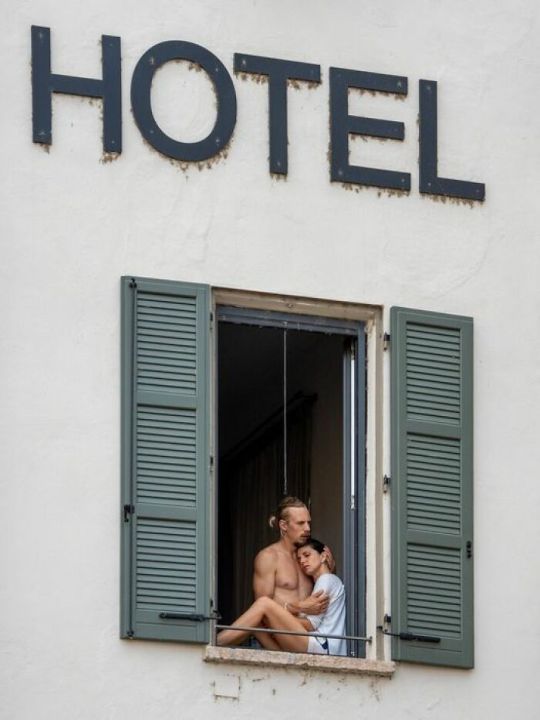
Lovers (Mantua, Italy)
Tim Askerov
0 notes
Text
Italy with Gigi 2024

View On WordPress
0 notes
Text


Cathedral of Mantua.
Jan. 2017
Explore:
#mantua#mantova#lombardy#lombardia#italia#italy#travel#original photography#photographers on tumblr#photography#lensblr#historical architecture#architecture#architecture photography#church#church architecture#church photography#cathedral#baroque#wanderingjana
11 notes
·
View notes
Text
The nine Muses were originally seen as the divine inspiration for poetry, song and dance, but gradually became the emblems for all the liberal arts. With Apollo (represented as the sun) they also symbolised the ‘harmony of the spheres’. Here Tintoretto’s sweeping strokes have created powerfully articulated nudes who fly and turn with extraordinary freedom.
This painting and another by Tintoretto, Esther before Ahasuerus, also in the Royal Collection are of a similar size and, by 1627, were hanging together in the same passage in the Palazzo Ducale, Mantua. Although there is no record of the commissions, we know that Guglielmo Gonzaga, the 3rd Duke of Mantua, purchased other paintings directly from Tintoretto and visited the artist in Venice. The subject of the Muses is clearly appropriate for a court with a strong tradition of music and for a Duke with a personal interest in liturgical music. The painting is generally dated to the period when Tintoretto was producing a large number of paintings for the Scuola Grande di San Rocco and for the Doge’s Palace, as well as other private commissions. The word IN in the inscription has been thought to be an abbreviation of ‘invenit’ (meaning ‘invented’ by the artist, as opposed to the more usually ‘fecit’, ‘made’). This may imply that Tintoretto designed but did not execute the painting, as in the similar inscription on the Raising of Lazarus (St Catherine’s Church, Lübeck).
There are several versions and adaptations of this composition: in Indianapolis Museum of Art, Clowes collection, possibly by Domenico Tintoretto, and a fragment in the Rijksmuseum, Amsterdam, including the lower left seated figure only. A variant showing Apollo, the Muses and Three Graces in Dresden was destroyed in the Second World War. The quality of the Royal Collection picture suggests that it is the prime version, as do its many pentiments.
The Muses were the nine daughters of Jupiter and Mnemosyne (Memory) and companions of Apollo (here represented as the sun rather than a bodily presence). Like Apollo, they were regarded as incorporating supreme outward beauty and intellectual grace. They were originally seen as the divine inspiration for poetry, song and dance, but gradually became the emblems of all the liberal arts. Hesiod and the literature of the later Roman Empire gave each muse a specific literary form and musical instrument, but the associations were always flexible. By the sixteenth century Apollo and the Muses had become associated with the idea of the harmony of the spheres, with Apollo as the Sun. It is not surprising, given this range of associations, that the individual Muses are hard to identify here. Calliope, representing epic poetry, is their chief and plays a stringed instrument; she may therefore be the Muse in the central position, playing the harpsichord or clavicembalo. Clio, the Muse of history, holds a book and may be the figure below Apollo in the painting. Urania, associated with astronomy, is here given a globe and tablet, but her compasses are held by the muse reclining at the lower edge of the painting. Among the sources that Tintoretto must have consulted is the manual of mythology by Vincenzo Cartari, Le imagini con la spositione de i dei de gli antichi, published in Venice in 1556 and enlarged and reprinted in subsequent years. This source does not distinguish the Muses but does include the detail of the garlands of flowers, laurel and palm leaves.
The range of musical instruments normally associated with the muses is here reduced to the harpsichord, bass viol, lute and lira da braccio, all attentively depicted by Tintoretto, who was himself an accomplished musician. The harpsichord can be compared to contemporary instruments made by Giovanni Baffo in Venice, but its long end, which is clear in the Indianopolis copy, is omitted. The near Muse on the right tunes and plays her lira da braccio at the same time: Tintoretto’s priority would seem to have been the dynamic of the turning figure rather than the accuracy in recording a performance.
The large, strongly modelled figures, boldly executed with sweeping strokes, strongly lit from the right, and freed from a landscape setting, weave a coherent design of dynamic diagonal lines across the picture plane and into the picture space. The execution and composition has been likened to the four large Allegories of 1577-8 painted for an ante-room in the Palazzo Ducale, the Atrio Quadrato, for which Tintoretto was paid in 1577-8.
Borghini records that even in his sixties, Tintoretto continued to collect and study models of famous statues, such as those by Giambologna (1529-1608), and never tired of copying them. The effect of such studies has been traced in paintings dating from the 1570s, including The Muses. The pose of the back view of the Muse on the right has been related to the so-called Groticella Venus of c.1570 (Boboli Grotto, Palazzo Pitti, Florence), but is closer to the smaller bronzes such as Venus Drying Herself of c.1565 or Astrology of c.1575 (both Kunsthistorisches Museum, Vienna). The pose is never exact, and the similarity lies in Tintoretto’s interest in Giambologna’s type of slender, elegant women in contraposto poses. It has been suggested that the Muse flying in from the left derives from a Giambologna model of Lichas from Hercules and Lichas (one version now in the Art Institute of Chicago). According to Carlo Ridolfi, Tintoretto made models out of wax or clay, dressed them in cloth, studied the folds of the cloth on the limbs, and placed them in wood and cardboard constructions resembling miniature houses with small lamps alongside to introduce the effects of light and shade. Models were hung from roof beams so that they could be studied when seen from below. Such procedures enabled Tintoretto to create these powerfully articulated, flying nudes with such extraordinary freedom.
Catalogue entry adapted from The Art of Italy in the Royal Collection: Renaissance and Baroque, London, 2007

The Muses by Jacopo Robusti, called Il Tintoretto
Italian, 1578
oil on canvas
Royal Collection Trust (acquired by King Charles I)
#history#classics#art#art history#music#music history#lutherie#italy#ancient rome#veneto#venice#jacopo robusti#guglielmo gonzago duke of mantua#domenico robusti#hesiod#vincenzo cartari#giovanni antonio baffo#giambologna#muses#apollo#jupiter#mnemosyne#calliope#clio#urania#harpsichord#viol#bass viol#lute#lira da braccio
186 notes
·
View notes
Text
Visconti Bridge, Valeggio sul Mincio, Italy: The Visconti Bridge at Valeggio sul Mincio is a medieval viaduct over the Mincio River built at the end of the 14th century by Gian Galeazzo Visconti, Duke of Milan. Initially conceived as a fortified dam to divert the Mincio water flowing to Mantua, it has served as a bridge since then. Wikipedia
411 notes
·
View notes
Text




The Lovers of Valdaro (discovered near Mantua, Italy in 2007, approx. 6.000 years old) // Arcane 02.09. "The Dirt Under Your Nails (2024) // Sonnett 116: "Let Me Not to the Marriage of True Minds" (Modern English Version of William Shakespeare, 1609)
352 notes
·
View notes
Text

ん?

Valdaro Lovers

꧁ here's where the story ends ꧂
The Lovers of Valdaro at the National Archaeological Museum of Mantua, Italy
#bsd#valdaro lovers#skk#bsd dazai#bsd chuuya#the lovers#bsd memes#bungo gay dogs#bsd beast#beast dazai#beast chuuya
281 notes
·
View notes